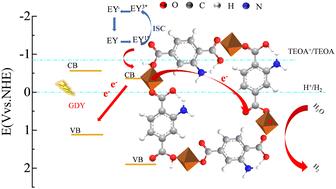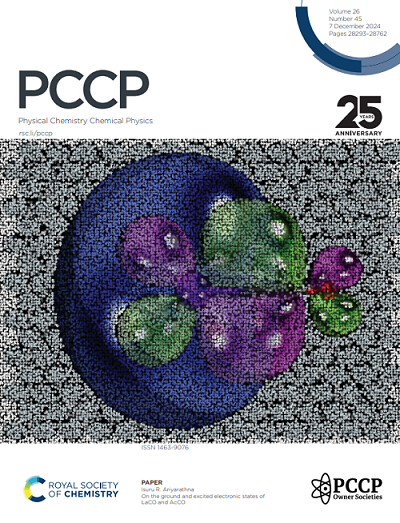Efficient photocatalytic hydrogen production by employing a graphdiyne/NH2-MIL-88B(Fe) composite
IF 2.9
3区 化学
Q3 CHEMISTRY, PHYSICAL
引用次数: 0
Abstract
The electron transfer rate in photocatalysts is one of the factors determining their hydrogen production activity. In this work, NH2-MIL-88B(Fe) (NFM) was synthesized using a one-step hydrothermal synthesis method and NFM/GDY-25 (NFMG-25) was successfully synthesized by loading graphdiyne (GDY) onto the surface of NFM. The hydrogen production performance and the mechanism of the prepared photocatalysts were systematically investigated using XRD, SEM, FT-IR, XPS, UV-Vis, PL and photoelectrochemical tests. The results showed that the hydrogen production of NFMG-25 reached 61.7 μmol in 5 hours. Photoelectrochemical and Mott–Schottky tests demonstrated that the composite catalyst exhibited high photogenerated carrier separation efficiency and single catalysts were n-type semiconductors. The conduction bands of NFM and GDY were −0.36 V and −0.56 V, respectively, while the valence bands were 1.90 V and 1.12 V. NFM acted as an electron acceptor and donor, which accelerated the transfer of the electrons, and enhanced the photocatalytic hydrogen production efficiency of the composite system. This study provides an effective method for using NFM in photocatalytic hydrogen production.

求助全文
约1分钟内获得全文
求助全文
来源期刊

Physical Chemistry Chemical Physics
化学-物理:原子、分子和化学物理
CiteScore
5.50
自引率
9.10%
发文量
2675
审稿时长
2.0 months
期刊介绍:
Physical Chemistry Chemical Physics (PCCP) is an international journal co-owned by 19 physical chemistry and physics societies from around the world. This journal publishes original, cutting-edge research in physical chemistry, chemical physics and biophysical chemistry. To be suitable for publication in PCCP, articles must include significant innovation and/or insight into physical chemistry; this is the most important criterion that reviewers and Editors will judge against when evaluating submissions.
The journal has a broad scope and welcomes contributions spanning experiment, theory, computation and data science. Topical coverage includes spectroscopy, dynamics, kinetics, statistical mechanics, thermodynamics, electrochemistry, catalysis, surface science, quantum mechanics, quantum computing and machine learning. Interdisciplinary research areas such as polymers and soft matter, materials, nanoscience, energy, surfaces/interfaces, and biophysical chemistry are welcomed if they demonstrate significant innovation and/or insight into physical chemistry. Joined experimental/theoretical studies are particularly appreciated when complementary and based on up-to-date approaches.
 求助内容:
求助内容: 应助结果提醒方式:
应助结果提醒方式:


